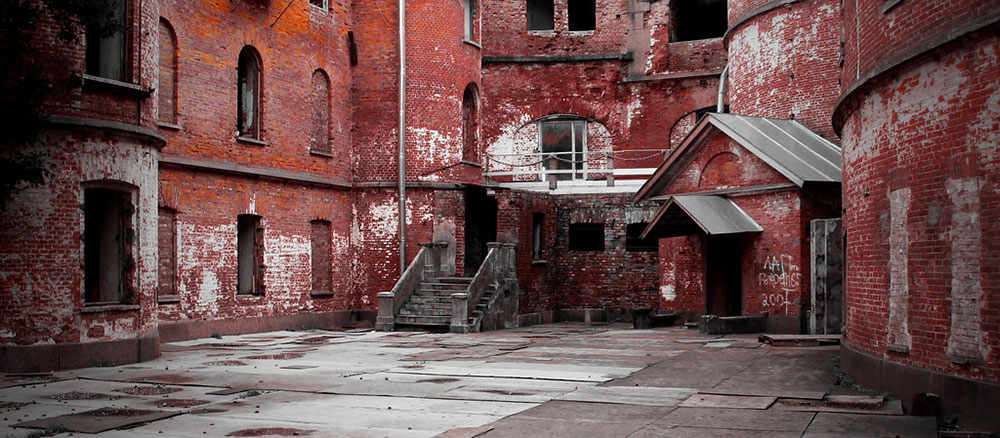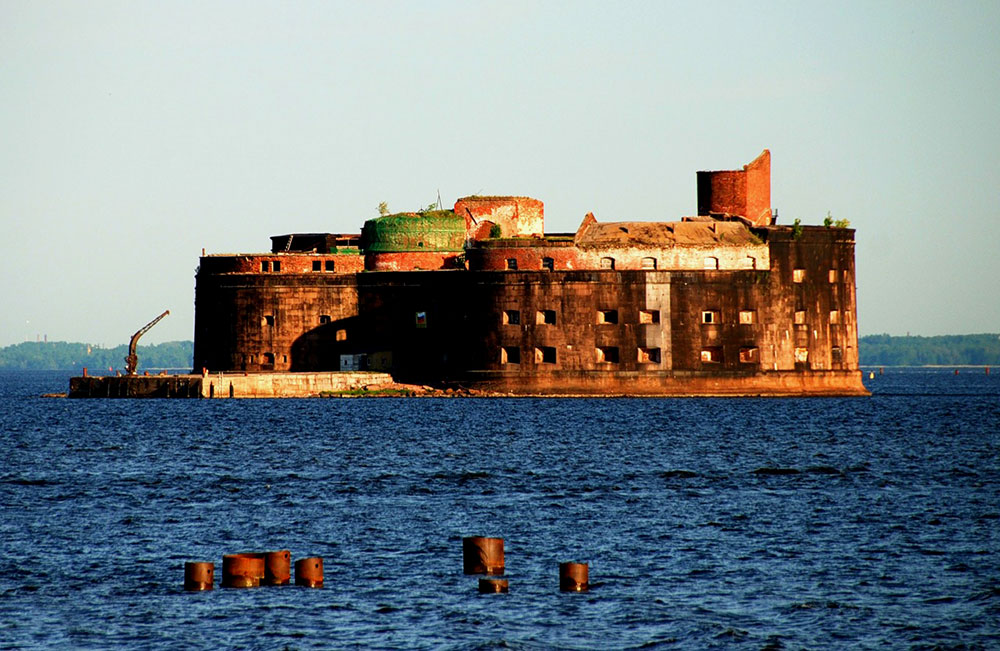The Mysterious “Plague Fort” of St. Petersburg.
Not far from the famous port city of Kronstadt you can see the walls of an artificial island, called Fort Emperor Alexander or the “Plague” fort. Situated to the south of the island of Kotlin, the “Plague” fort was one of the defensive structures of Kronstadt.
The abandoned fort is famous for the fact that about a hundred years ago it housed a mysterious laboratory.

After Saint Petersburg was founded, in 1703, construction of a number of forts was initiated. They were strategically placed across the Gulf of Finland, on the Baltic Sea to guard the city and fortify the entire area. The decision was made in the midst of the Great Northern War that lasted till 1721.
The forts together formed an almost impregnable defense against enemy attacks from the sea. And over the next two centuries, Russia had built over 40 forts between the southern and northern shores of the Gulf of Finland, securing the area even more.

In 1838, Nicholas I decided to build a separate fortification. The main purpose of the creation of this fort was to retain defensive control in the southern entry to St. Petersburg with the help of a crossfire system.
Fortunately, the “Plague” fort never took part in hostilities. However, during the Crimean War, it defended the naval base from the British and French navies. Thanks to its strategic location and timely modernization, the fort prevented the Anglo-French fleet from advancing in the Baltic Sea and capturing the fortress of Kronstadt.

By the end of the 19th century, the equipment of the “Plague” fort had become obsolete. For this reason, it and some other forts were withdrawn from the defense structure. From that moment events began in which the Fort Emperor Alexander received its second name “The Plague Fort.”
In Canton and Hong Kong in 1894, a plague epidemic began. The disease very quickly mowed down populations around the world. The total number of deaths was close to one hundred thousand people. Subsequently, it was from Hong Kong that the third plague pandemic spread.
In 1896, the epidemic reached the Caspian region. It was necessary to look for an antidote. Isolated from the outside world, the fort was excellent for creating a laboratory. In 1897, it was decided to transfer the fort to the Institute of Experimental Medicine. Inside the fort, scientists created an anti-plague laboratory called “Komochum.” Headed and financed by this laboratory was Prince Oldenburgskiy.

During tests and experiments, several doctors died. Residents of Kronstadt were afraid to catch winds blowing from the fort. It was at that time that the name “Plague Fort” appeared. Access to the fort for residents of the outside world was strictly limited. Communication with the outside world was maintained through a small steamship named “Microbe”. To communicate with St. Petersburg, a telegraph was used, and a telephone line was used to send messages to Kronstadt.
Outside, the fort had two floors, and on the inside – three. The building was divided into two sides within each of which was a staircase. One of the stairs consisted of stone, and the second one was made of cast iron.
The right part of the building was considered – contagious and dangerous for people. The second part of the building did not carry any threat. In spite of strict control and constant vigilance, a plague epidemic occurred twice inside the fort.
Inside the fort there were operating rooms, laboratories and premises for the maintenance of experimental animals. The experiments were carried out on many animals such as goats, cows, horses, rabbits, monkeys, camels, and deer.

There were also numerous other rooms: a bath, a kitchen, medical rooms, a laundry, a library, a canteen, a power station and rooms for the cremation of waste and corpses.
Work at the “Plague Fort” stopped with the beginning of the First World War. Most scientists were drafted into the army, and they went off to support the army. In 1917, after the February revolution, the chief caretaker of the project, Oldebursky, was removed from his post. All the developments of the scientists of the Plague Fort were transported to the first Russian anti-plague institute named “Microbe”.
Now the fort has turned into a zone for excursions. Visitors have something to see: unique structures, mechanisms and mysterious cellars. In addition, the fort was used for filming documentaries and television series.
Share this:
- Click to share on Facebook (Opens in new window)
- Click to share on Twitter (Opens in new window)
- Click to print (Opens in new window)
- Click to share on LinkedIn (Opens in new window)
- Click to share on Reddit (Opens in new window)
- Click to share on Tumblr (Opens in new window)
- Click to share on Pinterest (Opens in new window)
- Click to share on Pocket (Opens in new window)
- Click to share on Telegram (Opens in new window)
- Click to share on WhatsApp (Opens in new window)




